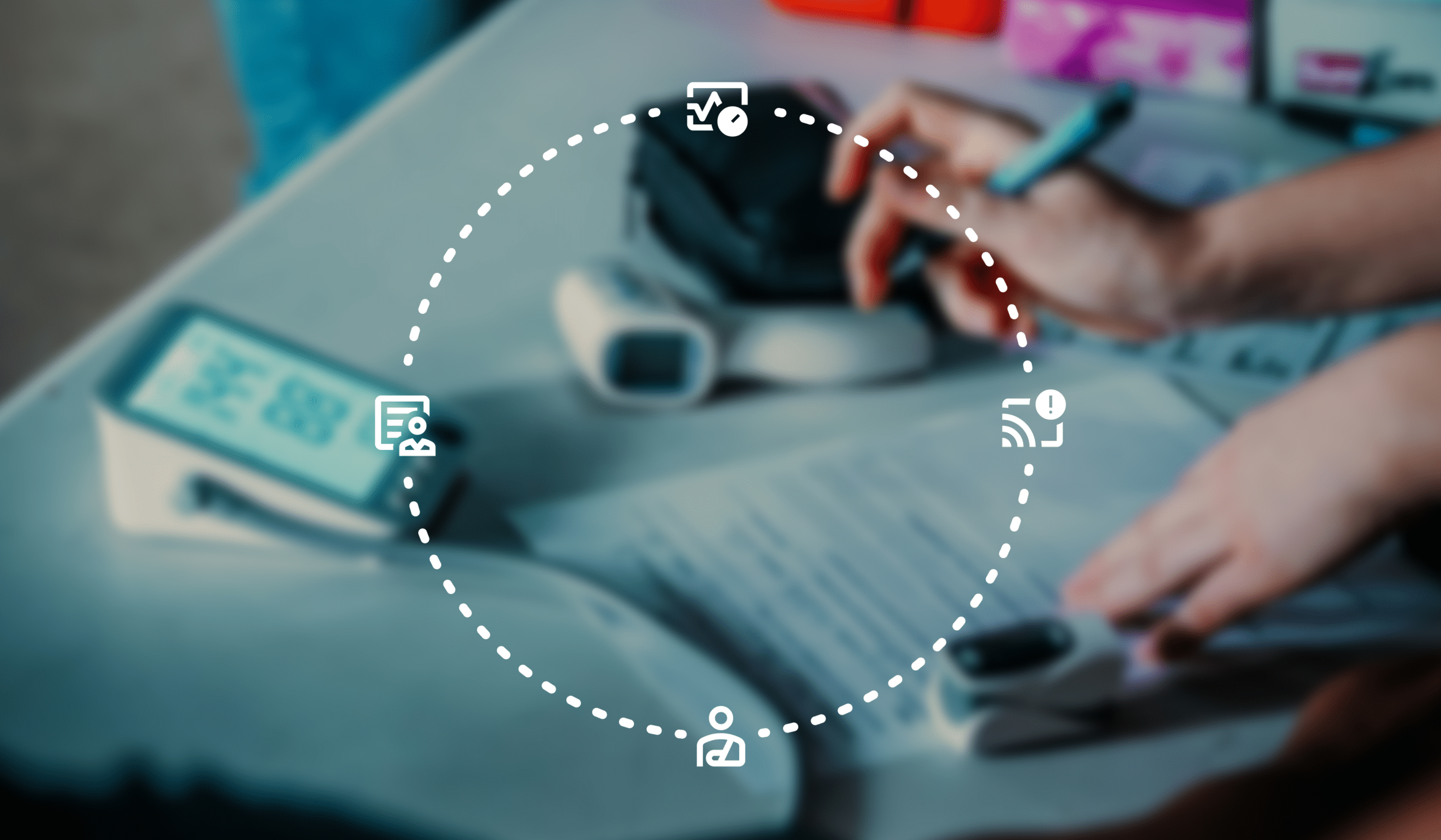Article summary
For the sake of this article when I talk about IoT, or Internet of Things, I’m broadly referring to “a network of, 1 or more, physical objects that are connected to the internet and must exchange data with other devices and systems, for the sake of enabling human actions.” I know, that’s a mouthful but, I believe it frames what comes next, in the context of healthcare IoT.
What makes IoT valuable?
Any IoT project’s value comes from the system’s ability to label, organize, signal, and display data. This is critical because all these decisions impact a person’s ability to understand and act on the outputs, ultimately gaining value from the information. These system attributes are enabled by careful and purposeful architecting of the information layer. This, in turn, informs the people facing interaction layer and back-end structures. If your business is going to be successful, it must connect the information layer to the back-end and interface layers in a way that lets people complete tasks. And all of this work must be informed by the business’s goals.
What makes healthcare IoT different?
From a strictly value deliverable perspective, an IoT healthcare project relies on those same factors. However, a few key factors impact how you approach the work and where you need to focus your attention.
Research is a must. Please, talk to people.
As always, it’s about the people. And, in this instance, a connected healthcare device can have an outsized effect on the wellbeing of or care for an individual. Health-related interactions are often scary, personal, stressful, confusing, and sometimes critical for an individual experiencing them. So talk to people, the people providing the care, the people interacting with patients, the people experiencing medical needs, all of them. Now is not the time to “fail fast.”
You’re delivering a service, whether you want to or not.
A healthcare IoT project will rarely ever have a single person it impacts. This is guaranteed in healthcare institutions. A service design approach is critical to ensure everyone involved has access to the right information at the right time. A nurse, physician assistant, surgeon, primary care doctor, and food service worker may all be impacted by a patient’s needs. That means the system must understand the roles, their relationship, and vital information. The very nature of IoT projects relies on effective service design to understand and define the various roles, touchpoints, devices, and interactions needed to support a system and the back-stage architecture that enables it.
Compulsory use changes the game.
At its core, most healthcare IoT projects are productivity tools. That is to say, they’re measured differently so they need a different set of rules for defining value. Products that are compulsory for people have a different route to success. This is why we need an approach that focuses on the fact that a healthcare worker, or patient, doesn’t get to decide to use a device or system.
A healthcare worker has a device in front of them or is accessing data from a device utilized by the institution. A patient has more wiggle room in some scenarios to choose a device or system but the fact remains they’re choosing because they have to, to address a healthcare concern. No one buys a medical device or logs in to a healthcare system for fun. This is an important distinction because it influences where your team puts its focus and how you will make decisions when prioritizing work.
Focus on outcomes, not technology.
You might think “but IoT is all about technology” and you’d be right, from your perspective that’s true. But the people you’re building for don’t care. In heavily task-based systems (remember what we said above), people employ products and services to get their job/task done, not to interact with your technology or organization. In most instances, they need important information, and they need it without having to jump through unnecessary hoops.
Stability over time is even more important.
If someone needs to check their blood pressure, then that’s the goal. Even as technology changes, the core outcome remains the same. By focusing on the jobs, we care for the scalability of the product and guard against future tech or experience debt. Any decision to add features or change technology needs to be evaluated seriously and audited for impact. After all, if I can no longer check my blood pressure without an internet connection, upgrading my device, or because I need to sign-up for an account, you’re no longer providing value. You might even be hurting the patient.

